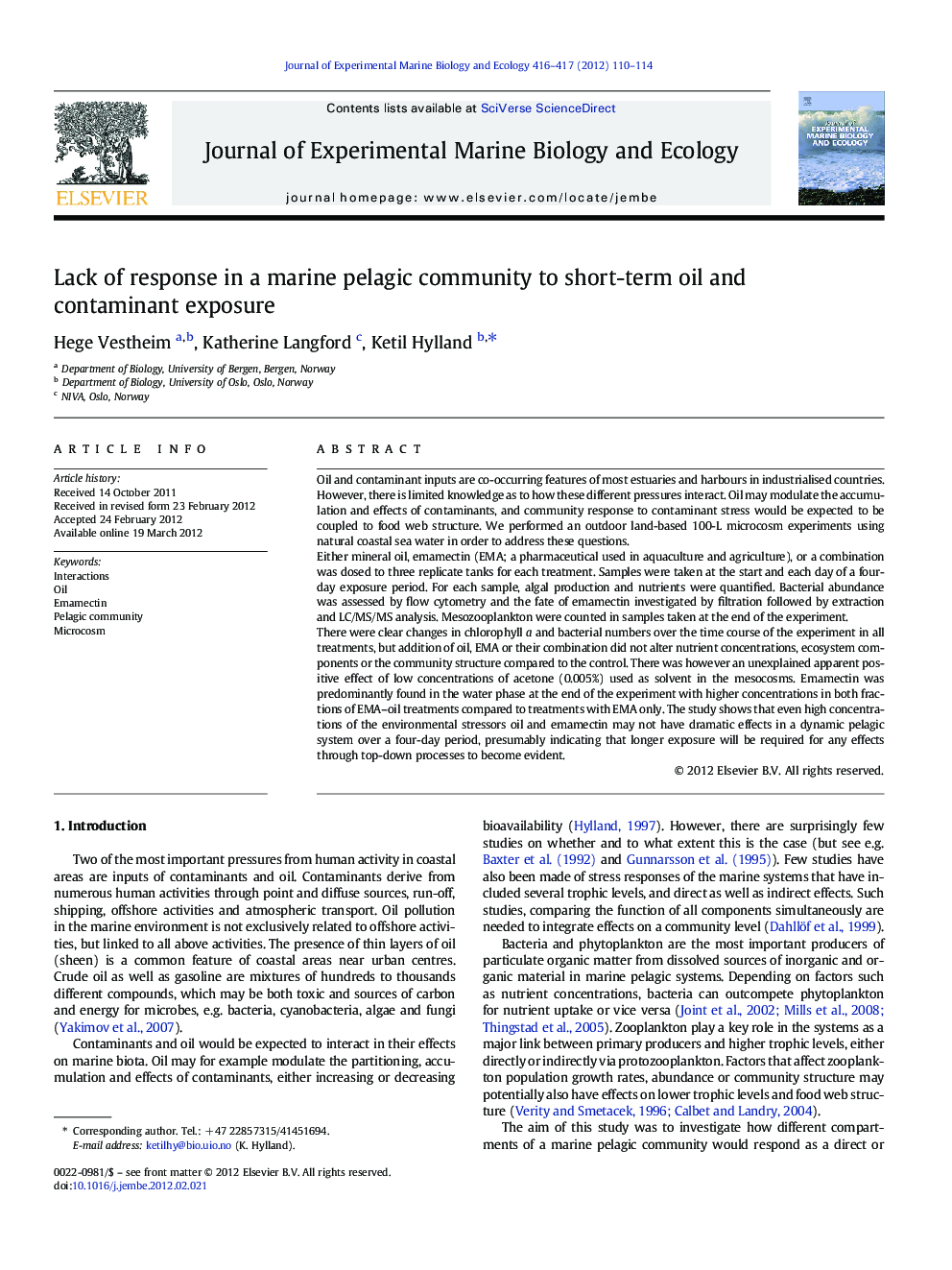| Article ID | Journal | Published Year | Pages | File Type |
|---|---|---|---|---|
| 4396098 | Journal of Experimental Marine Biology and Ecology | 2012 | 5 Pages |
Oil and contaminant inputs are co-occurring features of most estuaries and harbours in industrialised countries. However, there is limited knowledge as to how these different pressures interact. Oil may modulate the accumulation and effects of contaminants, and community response to contaminant stress would be expected to be coupled to food web structure. We performed an outdoor land-based 100-L microcosm experiments using natural coastal sea water in order to address these questions.Either mineral oil, emamectin (EMA; a pharmaceutical used in aquaculture and agriculture), or a combination was dosed to three replicate tanks for each treatment. Samples were taken at the start and each day of a four-day exposure period. For each sample, algal production and nutrients were quantified. Bacterial abundance was assessed by flow cytometry and the fate of emamectin investigated by filtration followed by extraction and LC/MS/MS analysis. Mesozooplankton were counted in samples taken at the end of the experiment.There were clear changes in chlorophyll a and bacterial numbers over the time course of the experiment in all treatments, but addition of oil, EMA or their combination did not alter nutrient concentrations, ecosystem components or the community structure compared to the control. There was however an unexplained apparent positive effect of low concentrations of acetone (0.005%) used as solvent in the mesocosms. Emamectin was predominantly found in the water phase at the end of the experiment with higher concentrations in both fractions of EMA–oil treatments compared to treatments with EMA only. The study shows that even high concentrations of the environmental stressors oil and emamectin may not have dramatic effects in a dynamic pelagic system over a four-day period, presumably indicating that longer exposure will be required for any effects through top-down processes to become evident.
► Oil, emamectin or a combination did not alter nutrients or community structure. ► Emamectin was predominantly found in the water phase, not associated with particles. ► There was an apparent hormetic effect of 0.005% acetone on some zooplankton.
